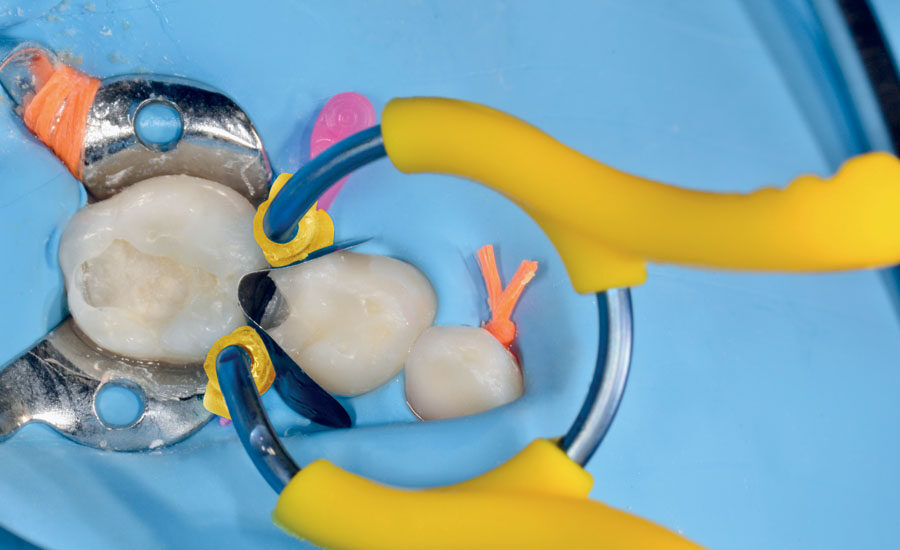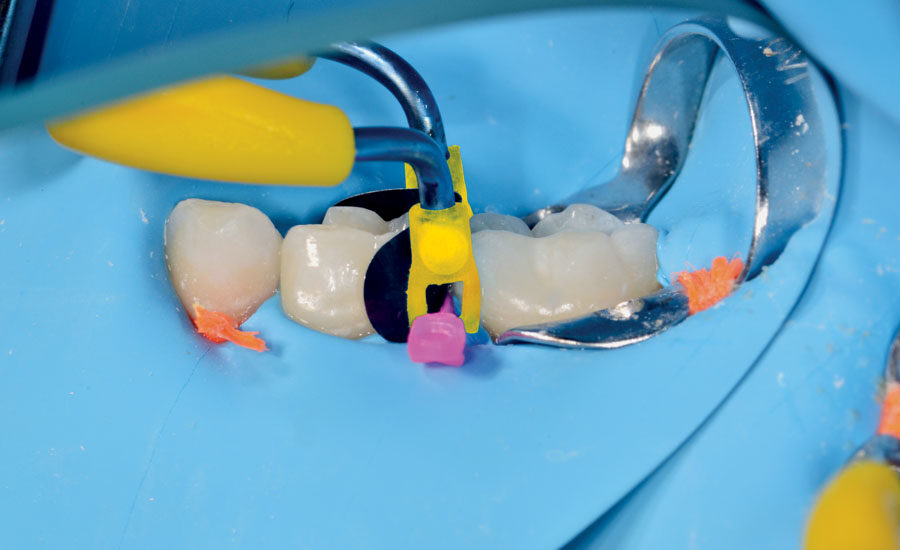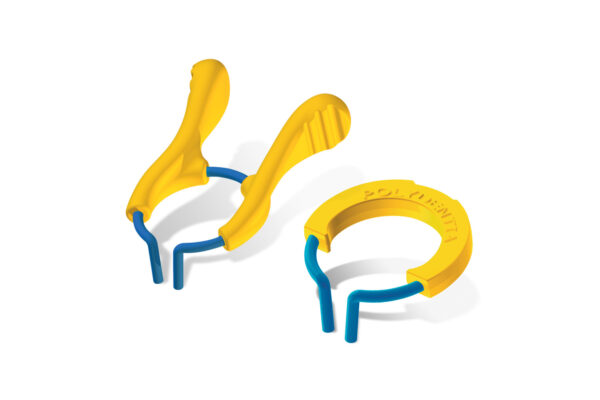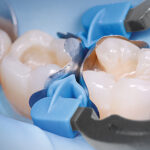25 Mar Dr. Marina Papachroni – Class II restoration of a primary molar – myClip Junior
Class II restoration of a primary molar with myClip Junior
by Dr. Marina Papachroni

Dr. Marina Papachroni
Marina Papachroni graduated in 1995 from dental school at the University of Athens. She completed a three-year post-graduate program where received her pediatric dentistry specialization certificate in 1999 and a two-year master’s degree in dental materials in 2001 from the same university. Thereafter, she has attended numerous congresses, courses and continuing education programs. She is the Treasurer of the Board of the Hellenic Academy of Clinical Dentistry and a member of the Hellenic Society of Pediatric Dentistry, European Academy of Pediatric Dentistry and International Association of Pediatric Dentistry. Lately, she is lecturing on Bioactive Materials, Restorative Pediatric Dentistry and Pulp Therapy of Primary teeth. The current focus of the clinical research is Bioactive Restorative Materials. Dr. Papachroni runs her private practice in Patras, Greece, with emphasis on aesthetic and microscopic pediatric dentistry.
caso clínico
The young patient came to our attention for a periodic control. The preliminary analysis revealed a class II carious lesion on molar 84, distal and a class I carious lesion on molar 85.
Because of the reduced crown height, we decided to improve the ring stability using the myClip Junior in combination with the provided extremities myTines Junior and proceed with a direct composite restoration of the occlusal and distal interproximal morphologies.
The following images shows the step-by-step restoration procedure using Polydentia myJunior kit.

1: Pre-operative situation showing a class I carious lesions on primary molar 85 and a class II on 84.

2: The view after rubber dam isolation.

3: The clinical situation after the preparation of the cavity, cleaned with air abrasion and disinfected.

4: Primary molar 84 equipped with myClip Junior ring, LumiContrast matrix and myWedge. myClip Junior in combination with myTines Junior and myWedge provides a reliable and stable solution for the restoration of small primary teeth. A common problem when dealing with primary dentitions is the difficulty to completely insert a wedge because of the small cervical spaces. The hollow V-shape of the myWedges allow them to compress, allowing an easy placement and improved matrix adaption to the cervical walls.

5: Labial view of the clinical situation; the geometry of the myTines Junior carefully embraces the wedge preventing the spring off effect of the ring even in case of younger patient with very low dental crown height.

6: Enamel margins have been etched using a standard 35% phosphoric acid solution.

7: Both cavities were filled with composite resin. We then modelled the occlusal surfaces, and light cured the filling material.

8: myClip Junior, myWedge and LumiContrast matrix were removed before proceeding with finishing and polishing procedures.

9: Final image of the restoration immediately after rubber dam removal
conclusión
MyClip Junior ring is designed especially for primary and young permanent teeth. Its accurate adaptation to the interproximal areas simplifies the finishing procedures. In case of younger patients, the extremities myTines Junior make the ring more stable and easier to adapt, preventing the spring off effect.
Also, it is obvious that with myClip Junior ring we got better contact points. I regard myClip Junior as an optimal solution for paediatric treatments. It allowed me to achieve an ideal restoration with less efforts and with considerable chair-time savings.
otros casos clínicos
-
Cavidades adyacentes de clase II en primeros y segundos molares – QuickmatFIT Matrices seccionales anatómicas y myRing Forte – Dr David Gerdolle
Una paciente de 28 años, sin enfermedad sistémica, presentó una lesión cariosa que afectaba a ambos molares 46D y 47M. El siguiente caso muestra la restauración directa de la lesión con composite utilizando las matrices anatómicas seccionales QuickmatFIT de Polydentia en combinación con myRing Forte y las cuñas plásticas myWedge en forma de V....
-
Diamond24, 24 soluciones para sus restauraciones de cavidades de II Clase
Diamond24 y myRing Classico: 24 soluciones para sus restauraciones de Clase II. Lea el artículo escrito por el Dr. Chiodera (en inglés), que explica cómo obtener excelentes puntos de contacto con Diamond24 y myRing Classico para restauraciones de cavidades de Clase II. ...
-
Dr. Chiodera – Restauración de clase II en el segundo premolar – Quickmat Forte kit
El Polydentia myQuickmat Forte kit es un sistema muy eficaz para las restauraciones posteriores de clase II....
-
Dr. Chiodera – Restauración de clase III – Unica anterior
El paciente acude a clínica para un chequeo rutinario. Un primer análisis revela una lesión cariosa de clase III en el incisivo 21. Decidimos eliminar la lesión de caries y procedemos a restaurar la cavidad con una carilla de composite directa....
-
Dr. Chiodera – Restauración MOD en el primer molar – myQuickmat Classico kit
El Polydentia myQuickmat Classico kit es un sistema muy eficaz para las restauraciones posteriores de clase II....
-
Dr. Fernández – Modificación de forma – Unica anterior
El siguiente estudio del caso provee una explicación paso a paso del procedimiento utilizado para la elaboración de las carillas con la matriz anterior Unica de Polydentia....
-
Dr. Gerdolle – Clase II mesial, distal y MOD – MyClip 2.0 + LumiContrast
El caso muestra la restauración directa con composite de la lesión usando el anillo de matriz seccional Polydentia myClip 2.0, las matrices seccionales LumiContrast y cuñas de madera....
-
Dr. Gerdolle – Clase II MO en el primer molar – myClip 2.0
El caso muestra la restauración directa con composite de la lesión usando el anillo de matriz seccional Polydentia myClip 2.0, las matrices seccionales LumiContrast y cuñas de madera....
-
Dr. Giuseppe Chiodera – Replacement of old Amalgams – myRing Classico and Diamond24
The following case shows the step-by-step restoration procedure using Polydentia myRing Classico separator ring equipped with the new Diamond24 silicone tubes. ...
-
Dr. Giuseppe Chiodera – Sustitución de una restauración de clase V de composite – Unica anterior
Paciente de 32 años acude a nuestra consulta para la reposición de una clase V antigua de composite en un incisivo 21....








